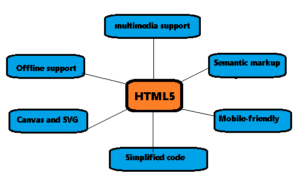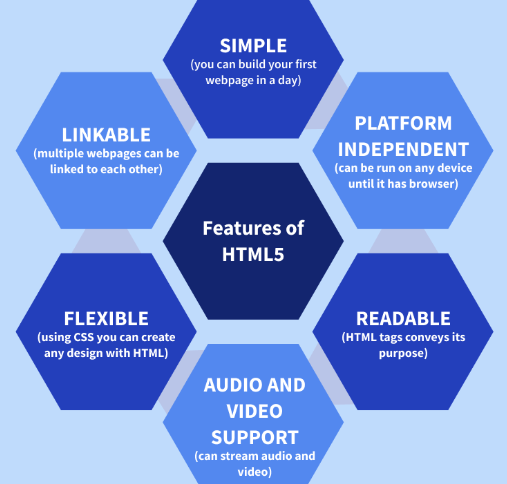In the ever-evolving landscape of web development, HTML5 stands as a cornerstone technology. With its continuous updates and enhancements, HTML5 has proven itself to be the driving force behind the modern web. In this article, we delve into the latest features and capabilities of HTML5, showcasing its power to enable innovative and dynamic web experiences.
Enhanced Multimedia Support
HTML5 has revolutionized multimedia integration on the web. The <audio> and <video> elements are now central to embedding audio and video content seamlessly. The latest updates have further refined these features, offering enhanced codec support, improved video playback options, and better accessibility features. Developers can now provide users with high-quality multimedia experiences without relying on third-party plugins, ensuring a smoother and more consistent user experience.
Improved Web Forms
Web forms are essential for user interaction, and HTML5 has elevated their functionality. With the introduction of new input types and attributes, creating user-friendly forms has become more accessible. Features like date pickers, color pickers, and email validation are now built directly into HTML5, reducing the need for extensive JavaScript coding. This not only saves development time but also enhances the user experience by offering intuitive form elements.
Geolocation Integration
HTML5 offers native support for geolocation, allowing websites to access a user’s location with their consent. This feature has opened up a world of possibilities, from location-based services to personalized content recommendations. Whether it’s finding nearby restaurants, tracking a delivery, or offering location-specific content, HTML5’s geolocation capabilities have added a dynamic dimension to web applications.
Offline Web Applications
HTML5 introduces the concept of Progressive Web Apps (PWAs), which take advantage of service workers to enable offline access to web content. These service workers act as intermediaries between the web application and the server, allowing data to be cached and retrieved even when the user is offline or has a poor internet connection. This capability has transformed the way users interact with web applications, as they can now continue to use them seamlessly, regardless of connectivity.

Enhanced Semantic Elements
Semantic elements in HTML5 provide more descriptive tags for structuring web content. The introduction of tags like <header>, <footer>, <nav>, and <article> has made it easier to create well-organized and accessible web pages. Search engines and assistive technologies also benefit from the improved semantics, as they can better understand and interpret the content, leading to improved search engine rankings and enhanced accessibility for users.
Canvas for Graphics and Animations
The <canvas> element is a powerful addition to HTML5, allowing developers to create dynamic graphics and animations directly within the browser. With JavaScript and WebGL, developers can draw complex shapes, render 3D graphics, and create interactive animations. This feature has opened up new possibilities for web-based games, data visualizations, and interactive storytelling, making HTML5 a versatile platform for creative endeavors.
Multi-Threading with Web Workers
HTML5 introduced Web Workers, a mechanism that enables multi-threading in web applications. Web Workers allow developers to execute scripts in the background, separate from the main UI thread, enhancing overall performance and responsiveness. This is particularly valuable for resource-intensive tasks like image processing, data parsing, and real-time data updates. By leveraging Web Workers, web applications can provide a smoother user experience even when handling demanding operations.
Enhanced Security Features
HTML5 brings several security improvements to the table. Moreover, it introduces the Content Security Policy (CSP) to mitigate cross-site scripting (XSS) attacks by specifying which sources of content are trusted. Additionally, HTML5 promotes the use of HTTPS to secure data transmission between the client and server. Hence ensuring data privacy and protection. These security measures are vital for safeguarding sensitive user information and maintaining the trust of web users.
Conclusion
In conclusion, the ever-evolving world of web development, HTML5 remains at the forefront. Therefore, continually evolving to meet the demands of modern web applications. With its latest features and capabilities, HTML5 empowers developers to create multimedia-rich, interactive, and secure web experiences that were once only imaginable. From enhanced multimedia support to improved forms, geolocation services, and offline capabilities, HTML5 has redefined the possibilities of web development. As technology continues to advance, HTML5 will undoubtedly adapt and innovate. Therefore, ensuring it remains a driving force behind the future of the web.

